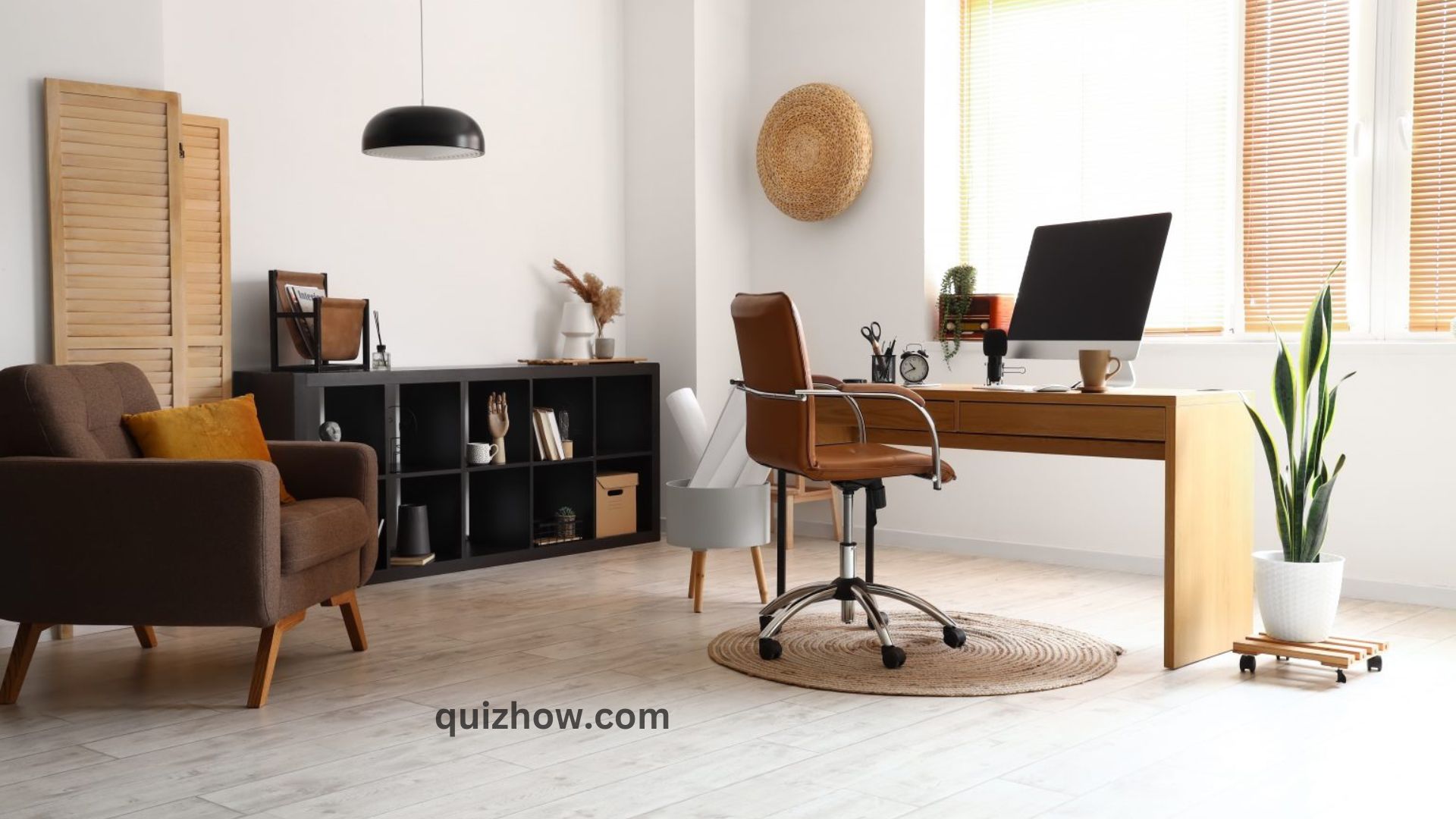Over the past ten years, I’ve moved nine times, and each time, my home office setup changes depending on the space I have. I’ve lived in everything from single bedrooms to a two-bedroom townhome, and now, I’m renting a three-bedroom house. With every move, I’ve enjoyed redesigning my workspace. In this video, I want to share what I’ve learned and give you a glimpse of my current home office setup.
Whether you’re setting up your first home office or thinking about upgrading your existing one, it’s important to have a plan. I’m going to share with you three key elements that make for a great workspace. The best part? You can incorporate them no matter your budget. Let’s take a look at how I’ve applied these three elements in my own studio.
If you’re not into reading, don’t worry—I’ve also made a video tour of my home office. It covers a lot of what I’ll talk about here, though not everything. Still, it gives a good overview.
Pillar #1 – Function
We all want our home offices to look great, but the most important thing to focus on is function over form. Start by thinking about the tasks you do every day and every week for work. Then, find ways to make these tasks easier and more efficient. These solutions should be at the heart of your office design.
In my case, I teach designers how to render with KeyShot. Before that, I was a freelance render artist. Now, most of my time is spent creating tutorials for my YouTube channel, developing paid courses, and producing content for my website. I designed my studio with all of this in mind, making sure it supports my workflow.
The Tech Tower
Computers
I use two powerful PCs to get my work done. The older one is a computer I built myself back in late 2017. It has a 32-core Gen 2 AMD Threadripper CPU, two 1080Ti GPUs, and 64 GB of RAM. Building it was a big project, and it’s probably the last time I’ll build a PC from scratch. If you’re curious about my experience with building and buying pre-configured computers, you can check it out here.
My newer PC was provided by Puget Systems. It has a 3rd Gen 32-core AMD Threadripper CPU, an RTX 2080Ti GPU, and 128 GB of RAM. Having both computers allows me to keep working on one while the other is busy rendering a project. For larger or time-sensitive projects, I can use both PCs together to speed up the process. Plus, if one of them fails, I’ve got a backup ready to go.
Both computers have the same storage setup. I use a 1 TB SSD, a 2 TB SSD scratch disk, and an 8 TB HDD for archiving projects. To keep everything synced between the two machines, I use a DS420+ Synology NAS, a network-attached storage device. The NAS not only serves as a backup, but it also keeps my files synced through the Synology Disk Station software.
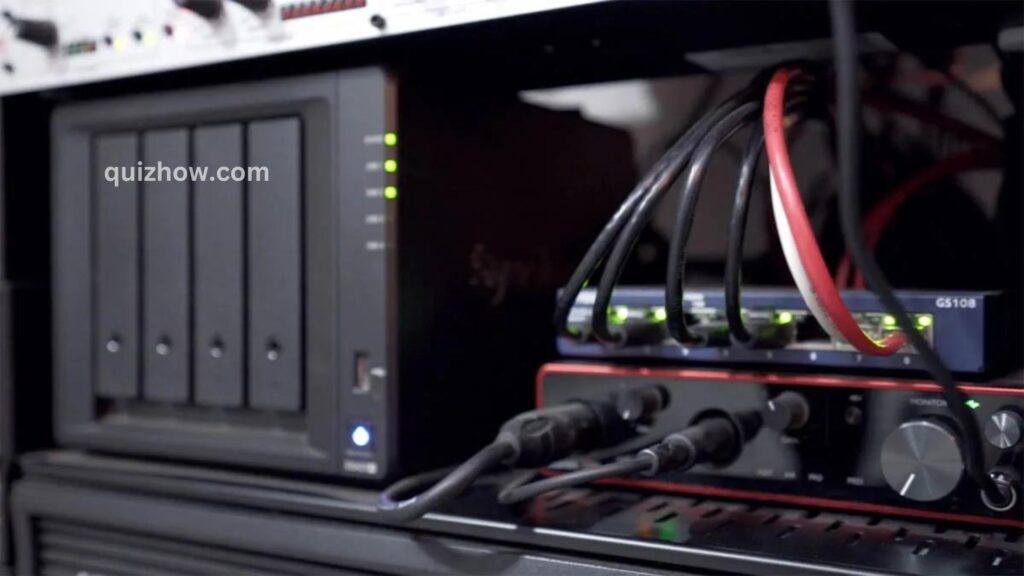
Every piece of equipment in my setup plays a crucial role in keeping me productive. They help reduce downtime, offer backups, and provide safety nets in case of data loss or power failure. I also use a cloud-based backup service called Backblaze to keep a secure copy of all my data in case of a disaster.
Smart UPS
Both of my computers are powered by APC Smart uninterruptible power supplies. These devices provide clean, steady power and protect against surges. If the power goes out, they have large batteries that keep my computers running long enough for me to shut everything down safely. I chose the rack-mounted version, but you can save some money by going with the floor-standing models instead.
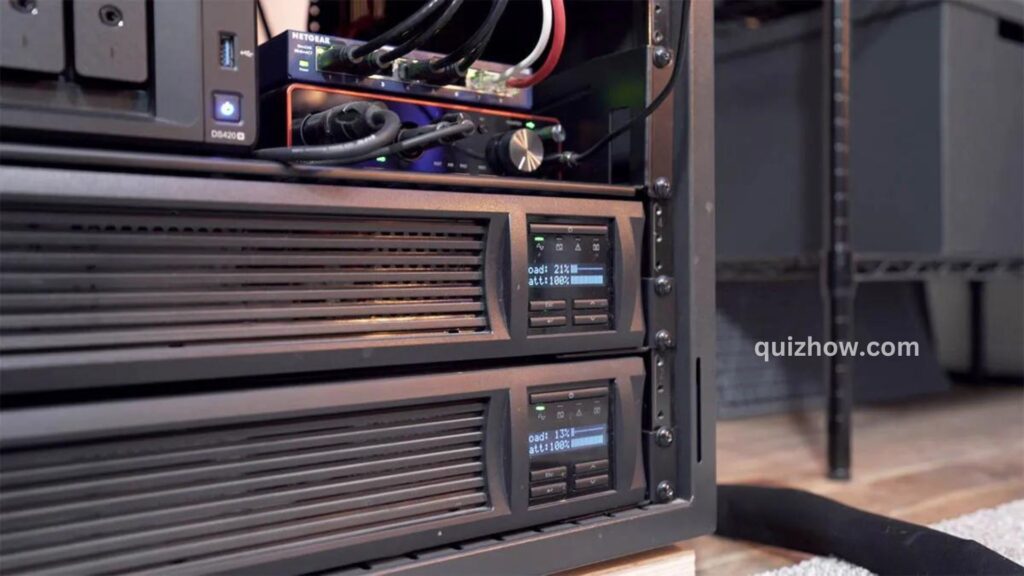
Audio Equipment
I use a Focusrite Scarlett 4i4 audio interface to connect my microphone and speakers to my computers. It’s a solid piece of equipment that honestly does more than I need, but the preamps are quiet, powerful, and get the job done. I also have a DBX 286s mic preamp and processor above my network switch. It helps reduce background noise and gives me cleaner vocals when I record.
Power Distribution Unit
On top of that, I have an AC Infinity power distribution unit. It lets me control power to everything with a single switch, except for the router and modem, which stay on all the time. It’s also a great way to protect your electronics and provides plenty of outlets in the back for all your gear.
Desktop Server Rack
All of this gear is set up in a 12U Middle Atlantic desktop rack. With so many devices, you can imagine there are a lot of cables to manage. To make things easier, I built a simple Lazy Susan out of plywood and a heavy-duty bearing, which lets me rotate the entire stack, even though it weighs over 300 pounds. This makes it easy to reach all the ports for wiring and organizing cables. When my computers are rendering, I rotate the stack to help with cooling.
Networking Gear
Above the interface, I have an 8-port Netgear Ethernet switch. It lets me connect the two computers, NAS, router, and Philips Hue bridge. With all the ports and wires needed, the switch is essential for getting everything hooked up.
On top of the tech tower, there’s a shelf with an Asus ROG AC5300 WiFi router and a standard Spectrum modem. The router has way more features than I actually need, but it’s been great to use its software to customize settings, especially for the NAS.
Room Considerations
Key Lights
Sticking with the focus on function, I’ve set up this room to improve the audio and video quality of my recordings. Most studio lights are bulky and take up a lot of space, but I use a couple of compact LED panels mounted on a Varipole, which is a large tension rod. This setup saves space and keeps things neat.
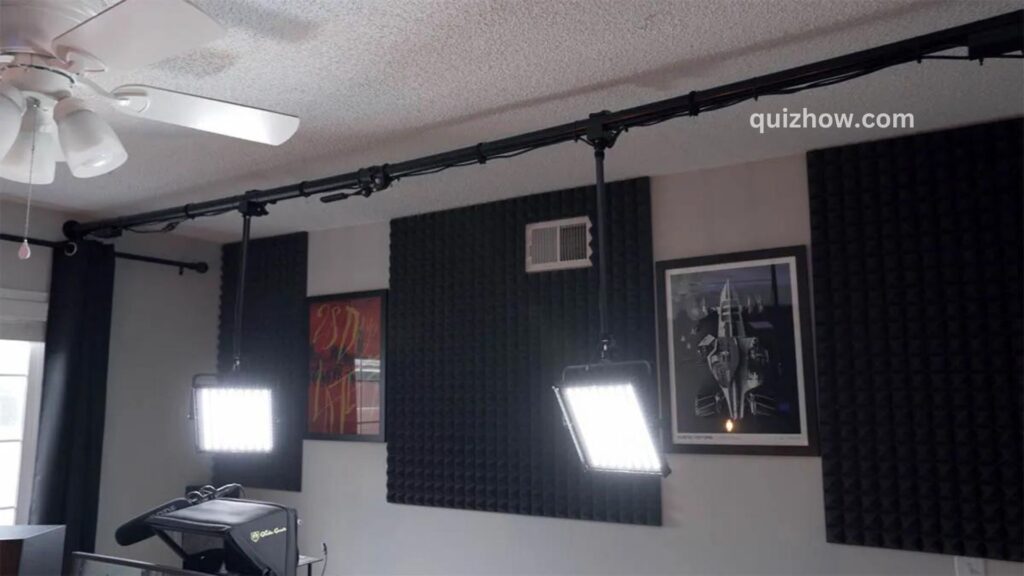
For soft lighting, I use a big piece of diffusion fabric that I added grommets to. When it’s time to film, I hang it from two eye-hooks in the ceiling. It might not look fancy, but it gets the job done. I use a similar trick for audio by hanging a cheap moving blanket from the tension rod behind the lights. I added grommets to the blanket and made hooks from Velcro and bent push-pins.
The moving blanket helps reduce reverb when I’m recording vocals. I also have another LED light for hair lighting mounted behind my backdrop and a backdrop light mounted on a tension rod between my bookshelves.
Acoustic Foam
If you’ve ever tried recording audio in a small, boxy room, you know it can be tough to get a clear, professional sound. To fix this, I’ve mounted foam on the walls. It can be tricky to do without damaging the walls, but I’ve found the best method is to use large pieces of acoustic foam, like 2×4 feet. I attach them with four small nails per piece. The holes are easy to patch up later, and the foam is reusable. I’ve actually used the same foam in three different offices.
Blackout Curtains
Big blackout curtains help me block out daylight and reduce reverb in the room, making it easier to control both light and sound when recording. I used the same idea for my backdrop, which is made from a thick, fleece-like material that absorbs both sound and light.
Desk Features
Monitor
My desk setup is pretty straightforward and tidy. I use a 34″ Dell Ultrawide monitor from 2016. It lets me record videos in 1440p with a 16:9 aspect ratio, plus it gives me a bit of extra screen space on the side. I really like the extra width for editing videos and working on multiple documents at once. The monitor isn’t too tall either, so I can easily move it aside when I need to record myself.
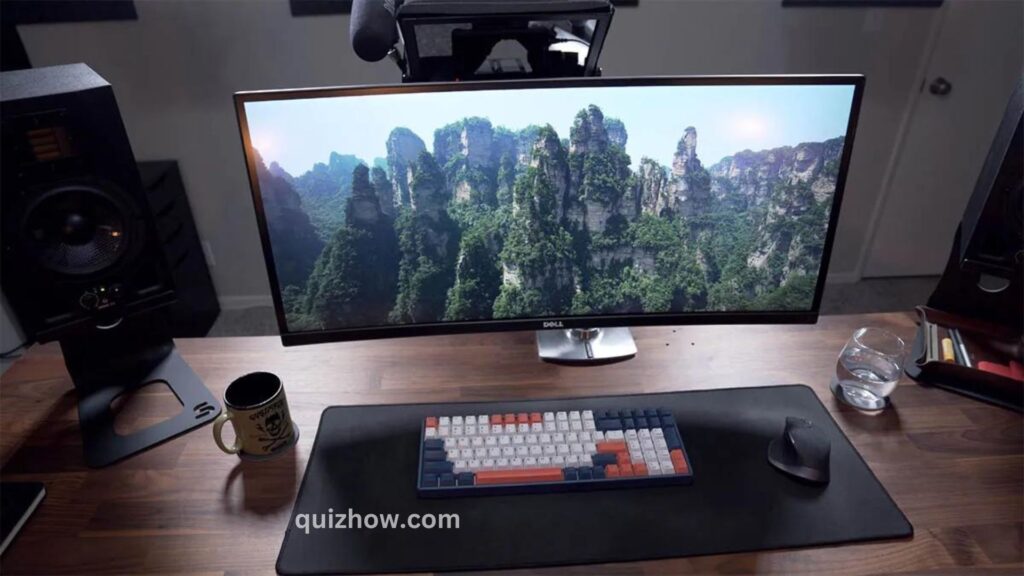
Camera & Microphone
When I sit down to record a video, everything’s set up and ready to go. The camera and mic are in place; I just lower my monitor, open OBS to start recording, look into the teleprompter, and begin speaking. The teleprompter makes it easy to read my script, helping me stay accurate and to the point.
I also use a 5.5-inch FeelWorld field monitor as a second display. This lets me move a window, app, or Zoom chat onto that monitor, so I can see what I need without losing eye contact with the camera, which is recording from behind the glass.
My current setup includes a Sony A7iii camera with a Tamron 28-75mm lens for video, and a Rode NTG3B shotgun mic for audio. I use a DC adapter to keep the camera powered continuously. The teleprompter is from Glide Gear, and everything’s supported by some inexpensive monitor arms that I modified to suit my needs. The arm is attached to my monitor stand, a sturdy desk-mount monitor arm by Ergotron.
Cable Management
As you might guess, keeping everything neat takes some serious cable management. I do my best to group cables together, using cable sleeves, a wire rack, and a power strip under my desk to keep things out of sight. I’ve got a large neoprene sleeve that bundles all the cables running between my tech tower and the desk, which you can see in the video at the top of this article. Without running wires through the floor, this is the best way I could keep things tidy.
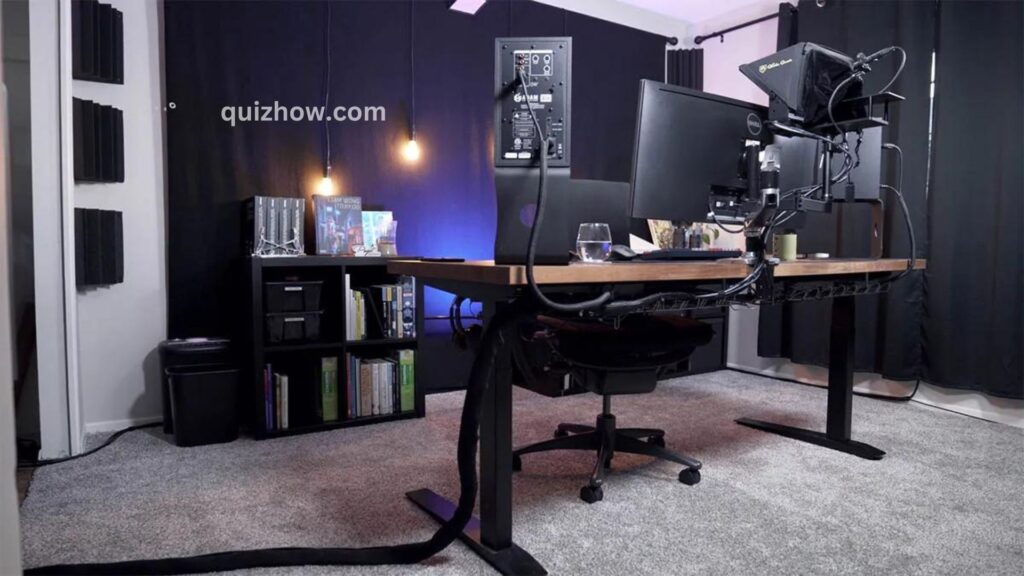
I also use a KVM switch so I can use the same keyboard, mouse, and monitor with both of my computers. I’ve mounted a button on the side of one computer, and when I press it, the mouse, keyboard, and monitor switch to the other computer. In previous setups, I had this button under the desk, but this time I kept it near the tech tower to reduce the number of cables I needed to run to the desk.
Saving time when recording
I’ve invested a significant amount of time, thought, and effort into designing a home office that aligns with my professional goals. It took me a while to get everything just right, but I’m very satisfied with the outcome, and the effort has been well worth it. I can now record videos much more efficiently and maintain consistent audio and video quality. Most importantly, it eliminates the need to spend time on setup and teardown for each recording session.
Also Read: Discover the Career Skills You Need: Take This Quiz
Pillar #2 – Comfort
The second key to a great home office is comfort. The idea isn’t to make it so cozy you fall asleep, but if you’re comfortable, you’ll be able to stay focused and work longer. I’ve found that being able to adjust my workspace helps me stay comfortable and healthy, which also reduces the risk of repetitive strain injuries.
Office Chair
About four years ago, I decided to invest in a Herman Miller Embody chair. Since I spend so much time sitting, I wanted a chair that would support my body, feel comfortable, and last for at least 10 years. After trying out a bunch of chairs, this one felt the most comfortable and adjustable to fit my needs.
Standing Desk
After a back injury in 2015, I try to limit how much time I spend sitting. So, I built a sit-stand desk by attaching an Ikea Karlby countertop to motorized Jarvis desk legs. This setup lets me work while standing, which I do for about three hours a day. The challenge with a standing desk is managing cables and placing equipment, but by mounting my speakers, camera, and microphone directly to the desk, everything moves together as one unit.
Keyboard & Mouse
I use an F96 wireless mechanical keyboard by IQunix, and it’s been a great choice. The typing experience is excellent, though it took me a little time to get used to the compact layout. I use the keypad a lot, so I didn’t want to give that up. For my mouse, I use a Logitech MX Master 2S. I love the clutch scroll wheel and the programmable thumb buttons—it makes everything easier.
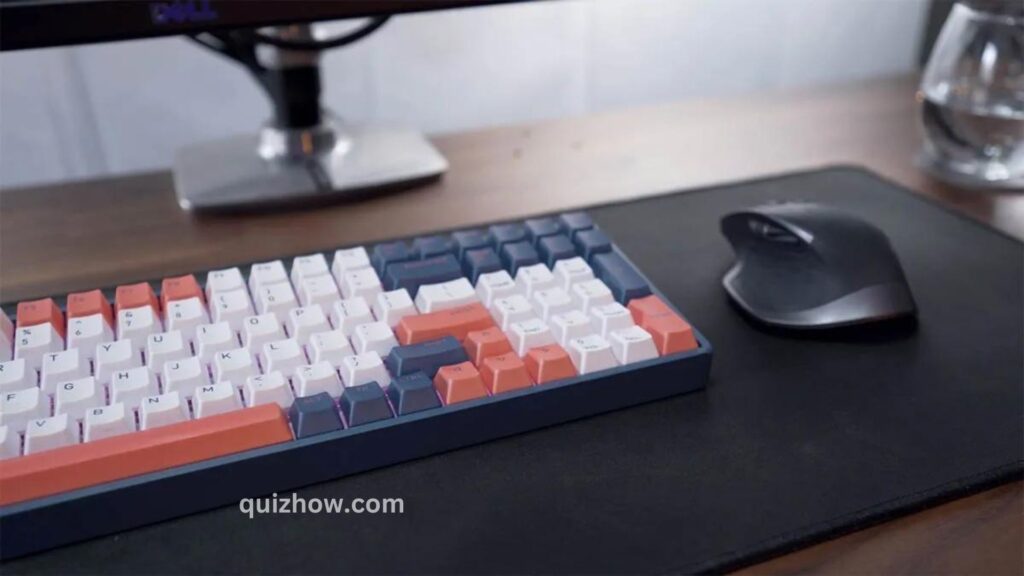
Speakers
I use A5X speakers by Adam Audio, and they’re amazing. For the price, I don’t think anything else compares. They’re set up on Soundrise Pro-9 monitor stands, which I love because they take up so little space on my desk. Depending on my mood and what I’m working on, I listen to a mix of film scores, audiobooks, podcasts, and music. Lately, I’ve been enjoying long playlists with relaxing music and ambient sounds. Great speakers really make the whole experience even better.
Lighting
I swapped out the lights in my ceiling fan with Philips Hue bulbs, and the lights on my backdrop are also Hue bulbs. I like to adjust the brightness and color of the lights and light a few candles to keep the room feeling cozy. Adding oil diffusers and scented candles helps create a calm and comfortable vibe. As much as I love plants, I don’t get enough sunlight in this room to keep them healthy, so I don’t keep any here long-term.
The more comfortable I make my space, the more I enjoy being in it. Make sure your space feels right for you and suits your personal taste.

Pillar #3 – Focus
The third and final key to a great home office is focus. It might sound obvious, but I’ve been paying more attention to it lately. With social media and technology pulling our attention in different directions, it’s crucial to remove distractions so you can stay focused on one task at a time.
Suggested Reading
If you want to improve your focus, check out the books Deep Work and Digital Minimalism by Cal Newport. I’ve found that when I stopped multitasking and learned to focus without distractions, my work improved a lot, and I get things done much faster.
Declutter
One of the best ways to boost focus is to keep your space clutter-free. I usually only keep a coffee or tea, water, and my notebook on my desk. Since 2014, I’ve been using the Large Moleskine Taskmaster Pro, which has the best mix of blank and daily planning pages I’ve found. I use it to plan my days, set monthly goals, jot down notes, and sketch out ideas. I also have a leather tray on my desk, a gift from years ago, where I keep anything I need within arm’s reach.
Organization
Sticking with the theme of organization, I can’t focus if my office is a mess. When everything has its place, I can quickly find what I need. But it’s not just about finding things easily; a tidy office also looks more professional. Being in a neat, professional space helps keep me motivated and focused. I use basic plastic bins and boxes and a label maker to make sure everything is organized and easy to find.
Quiet
If you don’t have a quiet place to work, I’d recommend getting some noise-cancelling earphones. The Gen 2 Bose QC 35s were a lifesaver for me when I traveled a lot for work and when I lived in Brooklyn. Nowadays, I mainly use them when I need extra focus. They’re a bit pricey, but they’re definitely worth it.
Inspiration
Finally, I like to surround myself with things that inspire me, like artwork and books. I’ve kept my collection small because I’ve moved so many times. Behind my computer, I have a limited edition Charlie Adlard poster from one of my favorite films, 28 Days Later, and a cool design by Concept Vehicle designer Daniel Simon.
On top of my bookshelves, you’ll find some of my favorite items, like The Walking Dead compendium, a vintage Syd Mead calendar, and a photo book of NASA products, along with other things I enjoy. Inside the bookshelves, I keep old sketchbooks, design and art books, and books about rendering and business. My book collection is pretty modest because I usually listen to books on Audible or Libby.
Having an inspiring environment helps me stay focused and find my direction when I’m feeling a bit lost.
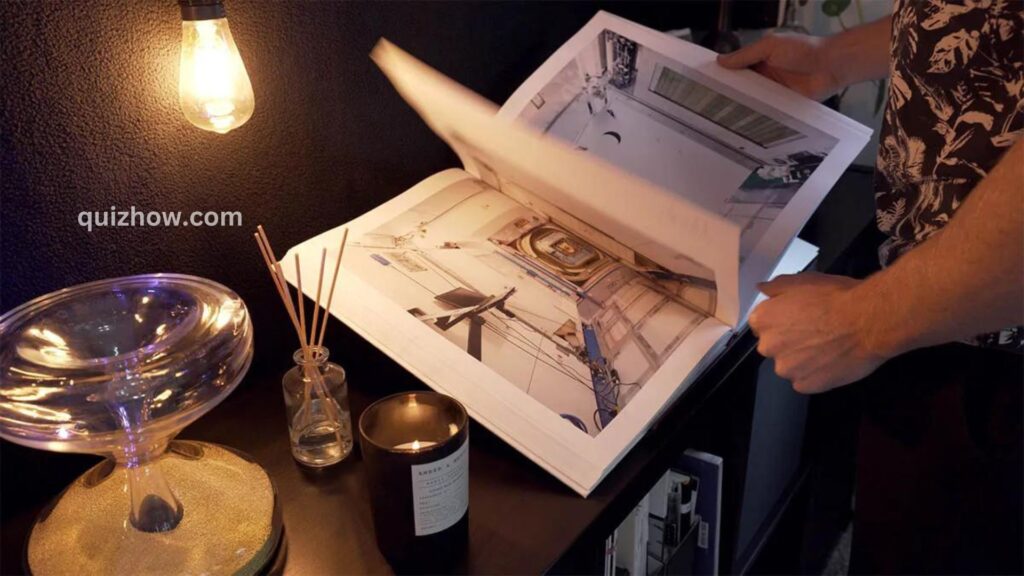
Home Office Summary
To sum up, the three key elements of a great home office are Function, Comfort, and Focus. If you keep these in mind while designing your space, you’ll create an awesome setup that supports your work and goals.
Most of us start with a simple setup, and over time, it evolves to meet our needs. Since I run my own business from my office, most of my equipment counts as a business asset or expense. My home studio has grown slowly, and it’s a collection of tools that helps me earn a living and enjoy the process.

Discover more from QuizHow
Subscribe to get the latest posts sent to your email.

